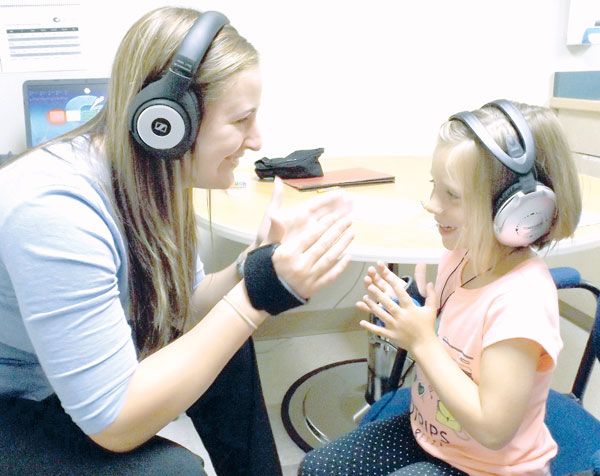Test proves timing is everything
Published 9:47 am Friday, July 4, 2014

- Jill Layton, left, an occupational therapist at St. Alphonsus Rehabilitation Services in Baker City, helps Trinity Harrell, 5, use an interactive metronome. The device helps improve a patientâs timing, fine and gross motor coordination, and in gait training. (LISA BRITTON/WesCom News Service)
How hard can it be to keep a beat?
That’s what I’m thinking as I slip on the headphones. My left hand is strapped with a button I am supposed to hit in time with the beeps I hear.
When I’m ready, Jill Layton starts the interactive metronome.
My task is to hit the button at the exact same time the beep sounds.
I go for a minute. At first it’s simple – or so I think – and my concentration wanders. Suddenly I know I’m off the beat – and what do those two lights on the computer mean? Am I anywhere close to the correct timing?
When the minute is up, Layton looks at my score.
My task average is 54. (You want as close to zero as possible.) I hit right on the beep only nine times – most of the time I was early.
Layton is an occupational therapist at Saint Alphonsus Rehabilitation Services in Baker City. This technology is called an interactive metronome, and its purpose is to help improve a patient’s timing, fine and gross motor coordination, gait training, and also includes a biofeedback component.
Timing, Layton said, is responsible for nearly every task you perform in a day.
She demonstrates by picking up a pencil.
Timing, she says, let’s you know “when to reach out, when to grasp, when to close your fingers,” she says.
The interactive metronome is designed to help patients with neurological disorders or injuries by tapping into that timing center of the brain.
For the full story, see Friday’s issue of The Observer









